Click on an image for detailed information
Click on a column heading to sort in ascending or descending order

My
List |
Addition Date
|
Target
|
Mission
|
Instrument
|
Size
|

|
2015-04-14 |
|
Spitzer Space Telescope
|
|
3840x2160x3 |
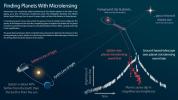
|
-
PIA19332:
-
Infographic: Finding Planets With Microlensing
Full Resolution:
TIFF
(24.89 MB)
JPEG
(613.4 kB)
|

|
2015-04-14 |
|
Spitzer Space Telescope
|
|
3556x2000x3 |
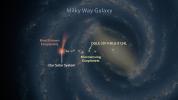
|
-
PIA19333:
-
Map of Exoplanets Found in Our Galaxy (Artist's Concept)
Full Resolution:
TIFF
(21.34 MB)
JPEG
(500.1 kB)
|

|
2015-06-11 |
|
Spitzer Space Telescope
|
|
7680x4320x3 |
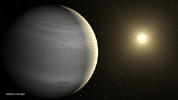
|
-
PIA19344:
-
Helium-Shrouded Planets (Artist's Concept)

Full Resolution:
TIFF
(99.57 MB)
JPEG
(681.7 kB)
|

|
2015-06-11 |
|
Spitzer Space Telescope
|
|
2550x3300x3 |

|
-
PIA19345:
-
How to Make a Helium Atmosphere
Full Resolution:
TIFF
(25.25 MB)
JPEG
(511.4 kB)
|

|
2015-06-25 |
|
Spitzer Space Telescope
|
|
4800x2700x3 |
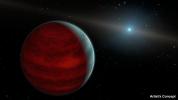
|
-
PIA19346:
-
Hypothetical 'Rejuvenated' Planets (Artist's Concept)
Full Resolution:
TIFF
(38.9 MB)
JPEG
(507.7 kB)
|

|
2015-07-30 |
|
Spitzer Space Telescope
|
|
3200x1799x3 |
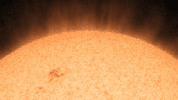
|
-
PIA19831:
-
Little Black Spot on the Star Today (Artist's Concept)

Full Resolution:
TIFF
(17.28 MB)
JPEG
(295.3 kB)
|

|
2015-07-30 |
|
Spitzer Space Telescope
|
|
2500x1325x3 |
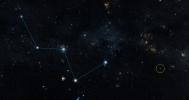
|
-
PIA19832:
-
Location of Nearest Rocky Exoplanet Known
Full Resolution:
TIFF
(9.941 MB)
JPEG
(292.6 kB)
|

|
2015-07-30 |
|
Spitzer Space Telescope
|
|
4800x2700x3 |
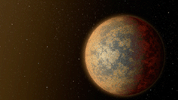
|
-
PIA19833:
-
Hot, Rocky World (Artist's Concept)

Full Resolution:
TIFF
(38.9 MB)
JPEG
(834.4 kB)
|

|
2015-08-20 |
|
Spitzer Space Telescope
|
Spitzer Space Telescope
|
3050x2630x3 |
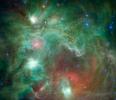
|
-
PIA19836:
-
Seeing Beyond the 'Monkey Head'
Full Resolution:
TIFF
(24.08 MB)
JPEG
(444.6 kB)
|

|
2015-08-20 |
|
Spitzer Space Telescope
|
Spitzer Space Telescope
|
4800x2700x3 |
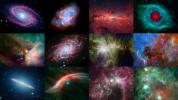
|
-
PIA19872:
-
NASA's Spitzer 12th Anniversary Space Calendar
Full Resolution:
TIFF
(38.9 MB)
JPEG
(1.945 MB)
|

|
2015-11-03 |
|
Spitzer Space Telescope
|
Spitzer Space Telescope
|
3400x3400x3 |
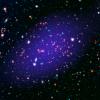
|
-
PIA20052:
-
A Giant Gathering of Galaxies
Full Resolution:
TIFF
(28.34 MB)
JPEG
(1.319 MB)
|

|
2016-03-28 |
|
Spitzer Space Telescope
|
|
1920x1080x3 |
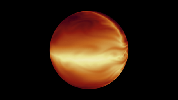
|
-
PIA20066:
-
Simulated Atmosphere of a Hot Gas Giant

Full Resolution:
TIFF
(1.294 MB)
JPEG
(52.89 kB)
|

|
2016-03-30 |
|
Spitzer Space Telescope
|
|
3840x2160x3 |
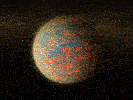
|
-
PIA20068:
-
Hot-Lava World Illustration

Full Resolution:
TIFF
(14.58 MB)
JPEG
(477 kB)
|

|
2016-04-26 |
|
Spitzer Space Telescope
|
|
3840x2160x3 |
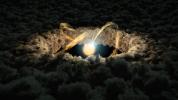
|
-
PIA20645:
-
Protoplanetary Disk (Artist's Concept)
Full Resolution:
TIFF
(13.92 MB)
JPEG
(629.5 kB)
|

|
2016-06-14 |
|
Spitzer Space Telescope
|
|
4534x2550x3 |
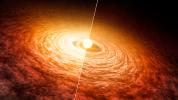
|
-
PIA20689:
-
Dimming of FU Orionis (Artist's Concept)
Full Resolution:
TIFF
(28.49 MB)
JPEG
(1.085 MB)
|

|
2016-08-29 |
|
Spitzer Space Telescope
|
Spitzer Space Telescope
|
1200x675x3 |
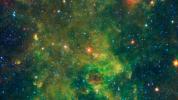
|
-
PIA20914:
-
Age-Defying Star
Full Resolution:
TIFF
(2.431 MB)
JPEG
(173 kB)
|

|
2016-09-08 |
|
Spitzer Space Telescope
|
Spitzer Space Telescope
|
2125x1195x3 |
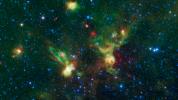
|
-
PIA20917:
-
Enterprising Nebulae
Full Resolution:
TIFF
(7.622 MB)
JPEG
(457.3 kB)
|

|
2016-09-28 |
Abell 2744
|
Spitzer Space Telescope
|
Spitzer Space Telescope
|
1233x693x3 |
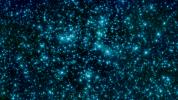
|
-
PIA20920:
-
'Pandora's Cluster' Seen by Spitzer
Full Resolution:
TIFF
(2.192 MB)
JPEG
(142.8 kB)
|

|
2017-02-22 |
|
Spitzer Space Telescope
|
TRAPPIST
|
3200x4000x3 |

|
-
PIA21421:
-
Abstract Concept of TRAPPIST-1 System
Full Resolution:
TIFF
(13.91 MB)
JPEG
(422.5 kB)
|

|
2017-02-22 |
|
Spitzer Space Telescope
|
TRAPPIST
|
6000x3000x3 |
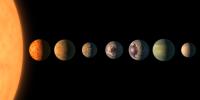
|
-
PIA21422:
-
TRAPPIST-1 Planet Lineup
Full Resolution:
TIFF
(11.88 MB)
JPEG
(487.1 kB)
|

|
2017-02-22 |
|
Spitzer Space Telescope
|
TRAPPIST
|
4534x2550x3 |
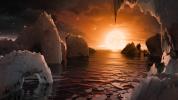
|
-
PIA21423:
-
Surface of TRAPPIST-1f
Full Resolution:
TIFF
(27.53 MB)
JPEG
(1.016 MB)
|

|
2017-02-22 |
|
Spitzer Space Telescope
|
TRAPPIST
|
5295x2978x3 |
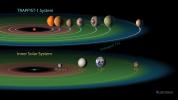
|
-
PIA21424:
-
The TRAPPIST-1 Habitable Zone
Full Resolution:
TIFF
(10.46 MB)
JPEG
(624.5 kB)
|

|
2017-02-22 |
|
Spitzer Space Telescope
|
TRAPPIST
|
5104x2871x3 |
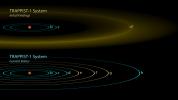
|
-
PIA21426:
-
The Discovery of TRAPPIST-1 Planets
Full Resolution:
TIFF
(3.828 MB)
JPEG
(491 kB)
|

|
2017-02-22 |
|
Spitzer Space Telescope
|
TRAPPIST
|
1621x911x3 |
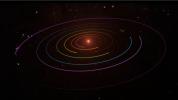
|
-
PIA21427:
-
TRAPPIST-1 Planetary Orbits and Transits
Full Resolution:
TIFF
(1.411 MB)
JPEG
(61.72 kB)
|

|
2017-02-22 |
|
Spitzer Space Telescope
|
TRAPPIST
|
4500x3600x3 |
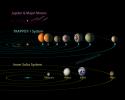
|
-
PIA21428:
-
TRAPPIST-1 Comparison to Solar System and Jovian Moons
Full Resolution:
TIFF
(3.612 MB)
JPEG
(646.9 kB)
|

|
2017-02-22 |
|
Spitzer Space Telescope
|
TRAPPIST
|
3600x4500x3 |

|
-
PIA21429:
-
Transit Illustration of TRAPPIST-1
Full Resolution:
TIFF
(26.82 MB)
JPEG
(535.5 kB)
|

|
2017-02-22 |
|
Spitzer Space Telescope
|
TRAPPIST
|
1906x1063x3 |
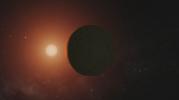
|
-
PIA21468:
-
TRAPPIST-1 Planets - Flyaround Animation
Full Resolution:
TIFF
(2.807 MB)
JPEG
(56.05 kB)
|

|
2014-01-06 |
|
Spitzer Space Telescope
|
|
1041x585x3 |
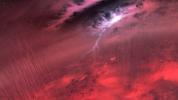
|
-
PIA21475:
-
Brown Dwarf Weather (Artist's Concept)
Full Resolution:
TIFF
(1.615 MB)
JPEG
(52.96 kB)
|

|
2017-08-11 |
|
Spitzer Space Telescope
|
TRAPPIST
|
1600x900x3 |
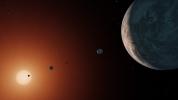
|
-
PIA21751:
-
TRAPPIST-1 System - Artist Concept
Full Resolution:
TIFF
(2.582 MB)
JPEG
(60 kB)
|

|
2017-08-17 |
|
Spitzer Space Telescope
|
|
4534x2550x3 |
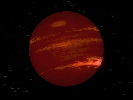
|
-
PIA21752:
-
Brown Dwarf Weather (Artist's Concept)

Full Resolution:
TIFF
(7.027 MB)
JPEG
(397.9 kB)
|

|
2017-10-04 |
|
Spitzer Space Telescope
|
|
5120x2880x3 |
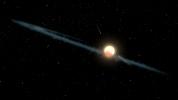
|
-
PIA22081:
-
Tabby's Star (Illustration)
Full Resolution:
TIFF
(5.938 MB)
JPEG
(382.4 kB)
|

|
2017-10-16 |
NGC 4993
|
Spitzer Space Telescope
|
IRAC
|
2048x718x3 |
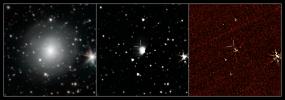
|
-
PIA21910:
-
Spitzer Observes Neutron Star Collision
Full Resolution:
TIFF
(2.454 MB)
JPEG
(135.4 kB)
|

|
2017-11-16 |
|
Spitzer Space Telescope
|
|
4800x2700x3 |
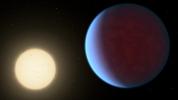
|
-
PIA22069:
-
55 Cancri e with Atmosphere (Artist's Concept)
Full Resolution:
TIFF
(22.07 MB)
JPEG
(374.4 kB)
|

|
2018-02-05 |
|
Spitzer Space Telescope
|
TRAPPIST
|
6000x3000x3 |
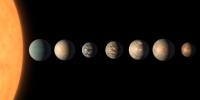
|
-
PIA22093:
-
TRAPPIST-1 Planet Lineup - Updated Feb. 2018
Full Resolution:
TIFF
(11.77 MB)
JPEG
(497.2 kB)
|

|
2018-02-05 |
|
Spitzer Space Telescope
|
TRAPPIST
|
6000x3500x3 |
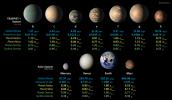
|
-
PIA22094:
-
TRAPPIST-1 Planet Lineup - Updated Feb. 2018
Full Resolution:
TIFF
(9.101 MB)
JPEG
(1.133 MB)
|

|
2018-02-05 |
|
Spitzer Space Telescope
|
TRAPPIST
|
4800x2700x3 |
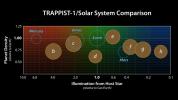
|
-
PIA22095:
-
Comparing TRAPPIST-1 to the Solar System
Full Resolution:
TIFF
(4.411 MB)
JPEG
(591.6 kB)
|

|
2018-02-05 |
|
Spitzer Space Telescope
|
TRAPPIST
|
4500x3600x3 |
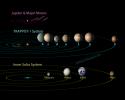
|
-
PIA22096:
-
TRAPPIST-1 Compared to Jovian Moons and Inner Solar System - Updated Feb. 2018
Full Resolution:
TIFF
(3.656 MB)
JPEG
(650.3 kB)
|

|
2018-02-05 |
|
Spitzer Space Telescope
|
TRAPPIST
|
5120x2880x3 |
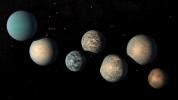
|
-
PIA22097:
-
Illustration of TRAPPIST-1 Planets as of Feb. 2018
Full Resolution:
TIFF
(13.41 MB)
JPEG
(606.5 kB)
|

|
2018-02-05 |
|
Spitzer Space Telescope
|
TRAPPIST
|
1068x600x3 |
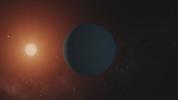
|
-
PIA22098:
-
TRAPPIST-1 Planet Animations
Full Resolution:
TIFF
(984.6 kB)
JPEG
(20.48 kB)
|

|
2018-08-02 |
|
Spitzer Space Telescope
|
IRAC
|
1234x960x3 |
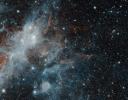
|
-
PIA22564:
-
Spitzer Spies Supernova Remnant HBH 3
Full Resolution:
TIFF
(3.555 MB)
JPEG
(311.6 kB)
|

|
2018-10-23 |
|
Spitzer Space Telescope
|
IRAC
|
5000x1848x3 |
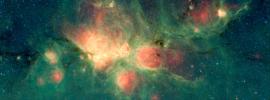
|
-
PIA22568:
-
Cat's Paw Image 1
Full Resolution:
TIFF
(27.74 MB)
JPEG
(1.447 MB)
|

|
2018-10-23 |
|
Spitzer Space Telescope
|
IRAC
|
5000x1848x3 |
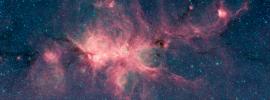
|
-
PIA22567:
-
Cat's Paw Image 2
Full Resolution:
TIFF
(27.74 MB)
JPEG
(1.843 MB)
|

|
2018-11-16 |
|
Spitzer Space Telescope
|
|
2031x2032x3 |
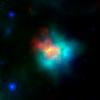
|
-
PIA22569:
-
Supernova Remnant G54
Full Resolution:
TIFF
(6.313 MB)
JPEG
(101.5 kB)
|

|
2018-12-18 |
|
Spitzer Space Telescope
|
|
1055x781x3 |
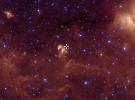
|
-
PIA22918:
-
Star Gaia 17pbi Seen by Spitzer
Full Resolution:
TIFF
(2.022 MB)
JPEG
(108.3 kB)
|

|
2019-02-27 |
|
Spitzer Space Telescope
|
IRAC
|
1200x1200x3 |
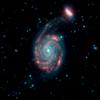
|
-
PIA23006:
-
GOALS Merging Galaxies NGC 7752 & 7753
Full Resolution:
TIFF
(1.62 MB)
JPEG
(58.82 kB)
|

|
2019-02-27 |
|
Spitzer Space Telescope
|
IRAC
|
1200x1200x3 |
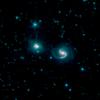
|
-
PIA23007:
-
GOALS Merging Galaxies VII Zw 96
Full Resolution:
TIFF
(1.385 MB)
JPEG
(52.86 kB)
|

|
2019-02-27 |
|
Spitzer Space Telescope
|
IRAC
|
1200x1200x3 |
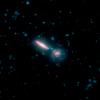
|
-
PIA23008:
-
GOALS Merging Galaxies Arp 302
Full Resolution:
TIFF
(906.8 kB)
JPEG
(41.97 kB)
|

|
2019-02-27 |
|
Spitzer Space Telescope
|
IRAC
|
2133x1200x3 |
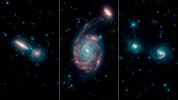
|
-
PIA23009:
-
GOALS Merging Galaxies
Full Resolution:
TIFF
(2.94 MB)
JPEG
(108.3 kB)
|

|
2019-03-05 |
|
Spitzer Space Telescope
|
Spitzer Space Telescope
|
2412x1713x3 |
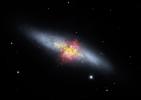
|
-
PIA23010:
-
The Cigar Galaxy's Magnetic Field
Full Resolution:
TIFF
(3.914 MB)
JPEG
(132.4 kB)
|

|
2019-03-27 |
|
Spitzer Space Telescope
|
IRAC
|
4600x3000x3 |
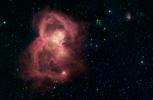
|
-
PIA23121:
-
Space Butterfly
Full Resolution:
TIFF
(29.94 MB)
JPEG
(1.244 MB)
|

|
2019-04-25 |
Messier 87
|
Spitzer Space Telescope
|
Spitzer Space Telescope
|
3226x1814x3 |
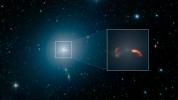
|
-
PIA23122:
-
Spitzer Captures Messier 87
Full Resolution:
TIFF
(11.32 MB)
JPEG
(324.5 kB)
|

|
2019-05-30 |
|
Spitzer Space Telescope
|
IRAC
MIPS
|
14391x6232x3 |
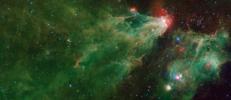
|
-
PIA23126:
-
Cepheus C and Cepheus B Region by Spitzer (Two-Instrument)
Full Resolution:
TIFF
(233.5 MB)
JPEG
(6.984 MB)
|

|
2019-05-30 |
|
Spitzer Space Telescope
|
IRAC
|
14391x6232x3 |
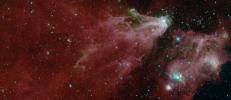
|
-
PIA23127:
-
Cepheus C and Cepheus B Region by Spitzer (One-Instrument)
Full Resolution:
TIFF
(237.3 MB)
JPEG
(9.239 MB)
|

|
2019-07-31 |
|
Spitzer Space Telescope
|
IRAC
|
1200x1200x3 |
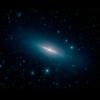
|
-
PIA23129:
-
NASA's Spitzer Spots a Perfectly Sideways Galaxy
Full Resolution:
TIFF
(2.072 MB)
JPEG
(59.86 kB)
|

|
2019-08-19 |
|
Spitzer Space Telescope
|
|
3840x2160x3 |
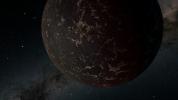
|
-
PIA23130:
-
Rare Glimpse of the Surface of a Rocky World (Illustration)
Full Resolution:
TIFF
(13.84 MB)
JPEG
(473.9 kB)
|

|
2019-09-30 |
|
Spitzer Space Telescope
|
Spitzer Space Telescope
|
3250x3250x3 |
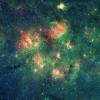
|
-
PIA23402:
-
Spitzer Spots Bubbles and Bow Shocks
Full Resolution:
TIFF
(31.7 MB)
JPEG
(1.693 MB)
|

|
2019-10-30 |
|
Spitzer Space Telescope
|
Spitzer Space Telescope
|
1041x586x3 |

|
-
PIA23403:
-
The Jack-o-Lantern Nebula
Full Resolution:
TIFF
(1.756 MB)
JPEG
(118.5 kB)
|

|
2019-12-19 |
|
Spitzer Space Telescope
|
Spitzer Space Telescope
|
15950x6500x3 |
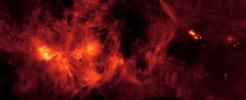
|
-
PIA23405:
-
Perseus Molecular Cloud
Full Resolution:
TIFF
(178.3 MB)
JPEG
(7.177 MB)
|

|
2020-01-22 |
|
Spitzer Space Telescope
|
Spitzer Space Telescope
|
5760x3240x3 |
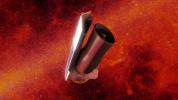
|
-
PIA23643:
-
Spitzer Space Telescope (Illustration)
Full Resolution:
TIFF
(50.38 MB)
JPEG
(1.553 MB)
|

|
2020-01-27 |
|
Spitzer Space Telescope
|
Spitzer Space Telescope
|
8832x4968x3 |
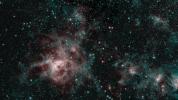
|
-
PIA23646:
-
Tarantula Nebula Spitzer 2-Color Image
Full Resolution:
TIFF
(112.2 MB)
JPEG
(5.08 MB)
|

|
2020-01-27 |
|
Spitzer Space Telescope
|
Spitzer Space Telescope
|
8832x4968x3 |
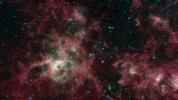
|
-
PIA23647:
-
Tarantula Nebula Spitzer 3-Color Image
Full Resolution:
TIFF
(126.6 MB)
JPEG
(4.053 MB)
|

|
2020-04-09 |
|
Spitzer Space Telescope
|
Spitzer Space Telescope
|
3840x2160x3 |
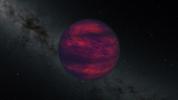
|
-
PIA23684:
-
Spitzer Brown Dwarf Wind (Artist's Concept)
Full Resolution:
TIFF
(13.09 MB)
JPEG
(543.8 kB)
|

|
2020-04-17 |
|
Spitzer Space Telescope
|
Spitzer Space Telescope
|
3317x1902x3 |
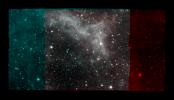
|
-
PIA23650:
-
Spitzer California Nebula Mosaic
Full Resolution:
TIFF
(12.09 MB)
JPEG
(759 kB)
|

|
2020-04-28 |
|
Spitzer Space Telescope
|
Spitzer Space Telescope
|
5120x2880x3 |
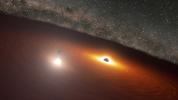
|
-
PIA23687:
-
Animation of Black Hole Disk Flare in OJ 287
Full Resolution:
TIFF
(25.34 MB)
JPEG
(648 kB)
|

|
2020-08-25 |
|
Spitzer Space Telescope
|
Spitzer Space Telescope
|
2000x1125x3 |
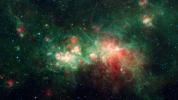
|
-
PIA23865:
-
Spitzer Image of Star Factory W51
Full Resolution:
TIFF
(6.752 MB)
JPEG
(432.4 kB)
|

|
2021-08-17 |
|
Spitzer Space Telescope
|
Spitzer Space Telescope
|
4800x2700x3 |
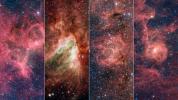
|
-
PIA24577:
-
Four Famous Nebulae
Full Resolution:
TIFF
(38.9 MB)
JPEG
(2.529 MB)
|

|
2021-10-25 |
|
Spitzer Space Telescope
|
Spitzer Space Telescope
|
3542x3542x3 |
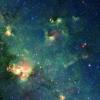
|
-
PIA24579:
-
Godzilla Nebula Imaged by Spitzer
Full Resolution:
TIFF
(37.65 MB)
JPEG
(2.228 MB)
|

|
2022-01-13 |
|
Spitzer Space Telescope
|
Spitzer Space Telescope
|
1600x900x3 |
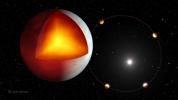
|
-
PIA24580:
-
Exoplanet XO-3b Illustration
Full Resolution:
TIFF
(1.902 MB)
JPEG
(102.6 kB)
|

|
2022-03-18 |
|
Spitzer Space Telescope
|
Spitzer Space Telescope
|
3840x2160x3 |
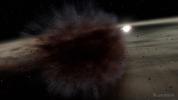
|
-
PIA25161:
-
Planetesimal Collison Around Star HD 166191 (Illustration)
Full Resolution:
TIFF
(9.714 MB)
JPEG
(282.3 kB)
|

|
2007-04-27 |
Sol (our sun)
|
Solar TErrestrial RElations Observatory (STEREO)
|
SECCHI/Extreme Ultraviolet Imaging Telescope
|
1920x1080x3 |
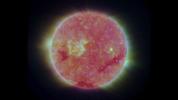
|
-
PIA09320:
-
Full Disk Image of the Sun, March 26, 2007
Full Resolution:
TIFF
(6.23 MB)
JPEG
(110.4 kB)
|

|
2007-04-27 |
Sol (our sun)
|
Solar TErrestrial RElations Observatory (STEREO)
|
SECCHI/Extreme Ultraviolet Imaging Telescope
|
1920x1080x3 |
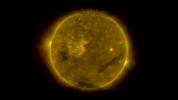
|
-
PIA09321:
-
Full Disk Image of the Sun, March 26, 2007 (Anaglyph)
Full Resolution:
TIFF
(6.23 MB)
JPEG
(91.3 kB)
|

|
2007-04-27 |
Sol (our sun)
|
Solar TErrestrial RElations Observatory (STEREO)
|
SECCHI/Extreme Ultraviolet Imaging Telescope
|
1920x1080x3 |
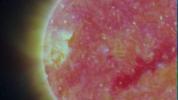
|
-
PIA09322:
-
Close-up View of an Active Region of the Sun, March 23, 2007
Full Resolution:
TIFF
(6.23 MB)
JPEG
(116 kB)
|

|
2007-04-27 |
Sol (our sun)
|
Solar TErrestrial RElations Observatory (STEREO)
|
SECCHI/Extreme Ultraviolet Imaging Telescope
|
1920x1080x3 |
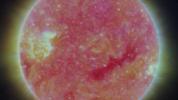
|
-
PIA09324:
-
Closer View of the Equatorial Region of the Sun, March 24, 2007
Full Resolution:
TIFF
(6.23 MB)
JPEG
(129.6 kB)
|

|
2007-04-27 |
Sol (our sun)
|
Solar TErrestrial RElations Observatory (STEREO)
|
SECCHI/Extreme Ultraviolet Imaging Telescope
|
1920x1080x3 |
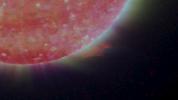
|
-
PIA09326:
-
Right Limb of the South Pole of the Sun, March 18, 2007
Full Resolution:
TIFF
(6.23 MB)
JPEG
(85.81 kB)
|

|
2007-04-27 |
Sol (our sun)
|
Solar TErrestrial RElations Observatory (STEREO)
|
SECCHI/Extreme Ultraviolet Imaging Telescope
|
1920x1080x3 |
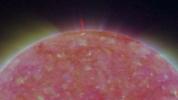
|
-
PIA09328:
-
North Pole of the Sun, March 20, 2007
Full Resolution:
TIFF
(6.23 MB)
JPEG
(94.86 kB)
|

|
2007-04-27 |
Sol (our sun)
|
Solar TErrestrial RElations Observatory (STEREO)
|
SECCHI/Extreme Ultraviolet Imaging Telescope
|
1920x1080x3 |
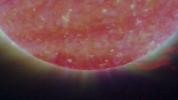
|
-
PIA09330:
-
South Pole of the Sun, March 20, 2007
Full Resolution:
TIFF
(6.23 MB)
JPEG
(94.62 kB)
|

|
2007-04-27 |
Sol (our sun)
|
Solar TErrestrial RElations Observatory (STEREO)
|
SECCHI/Extreme Ultraviolet Imaging Telescope
|
1920x1080x3 |
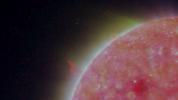
|
-
PIA09332:
-
Left Limb of North Pole of the Sun, March 20, 2007
Full Resolution:
TIFF
(6.23 MB)
JPEG
(84.33 kB)
|

|
2007-04-27 |
Sol (our sun)
|
Solar TErrestrial RElations Observatory (STEREO)
|
SECCHI/Extreme Ultraviolet Imaging Telescope
|
1920x1080x3 |
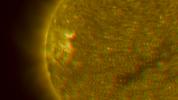
|
-
PIA09323:
-
Close-up View of an Active Region of the Sun, March 23, 2007 (Anaglyph)
Full Resolution:
TIFF
(6.23 MB)
JPEG
(145.6 kB)
|

|
2007-04-27 |
Sol (our sun)
|
Solar TErrestrial RElations Observatory (STEREO)
|
SECCHI/Extreme Ultraviolet Imaging Telescope
|
1920x1080x3 |
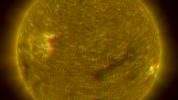
|
-
PIA09325:
-
Closer View of the Equatorial Region of the Sun, March 24, 2007 (Anaglyph)
Full Resolution:
TIFF
(6.23 MB)
JPEG
(169.6 kB)
|

|
2007-04-27 |
Sol (our sun)
|
Solar TErrestrial RElations Observatory (STEREO)
|
SECCHI/Extreme Ultraviolet Imaging Telescope
|
1920x1080x3 |
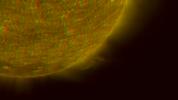
|
-
PIA09327:
-
Right Limb of the South Pole of the Sun, March 18, 2007 (Anaglyph)
Full Resolution:
TIFF
(6.23 MB)
JPEG
(99.1 kB)
|

|
2007-04-27 |
Sol (our sun)
|
Solar TErrestrial RElations Observatory (STEREO)
|
SECCHI/Extreme Ultraviolet Imaging Telescope
|
1920x1080x3 |
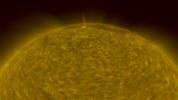
|
-
PIA09329:
-
North Pole of the Sun, March 20, 2007 (Anaglyph)
Full Resolution:
TIFF
(6.23 MB)
JPEG
(126.2 kB)
|

|
2007-04-27 |
Sol (our sun)
|
Solar TErrestrial RElations Observatory (STEREO)
|
SECCHI/Extreme Ultraviolet Imaging Telescope
|
1920x1080x3 |
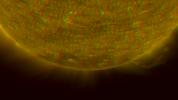
|
-
PIA09331:
-
South Pole of the Sun, March 20, 2007 (Anaglyph)
Full Resolution:
TIFF
(6.23 MB)
JPEG
(114.9 kB)
|

|
2007-04-27 |
Sol (our sun)
|
Solar TErrestrial RElations Observatory (STEREO)
|
SECCHI/Extreme Ultraviolet Imaging Telescope
|
1920x1080x3 |
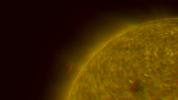
|
-
PIA09333:
-
Left Limb of North Pole of the Sun, March 20, 2007 (Anaglyph)
Full Resolution:
TIFF
(6.23 MB)
JPEG
(89.44 kB)
|

|
2018-04-16 |
Sol (our sun)
|
SDO
|
Atmosphere Imaging Assembly
|
1650x1650x3 |
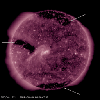
|
-
PIA22414:
-
Three Coronal Holes

Full Resolution:
TIFF
(4.104 MB)
JPEG
(179.7 kB)
|

|
2016-11-09 |
Sol (our sun)
|
SDO
|
Atmosphere Imaging Assembly
|
1200x645x3 |
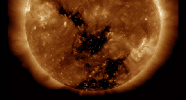
|
-
PIA16909:
-
Earth-Facing Coronal Holes

Full Resolution:
TIFF
(1.704 MB)
JPEG
(57.05 kB)
|

|
2014-02-11 |
Sol (our sun)
|
SDO
|
Atmosphere Imaging Assembly
|
1024x1024x3 |
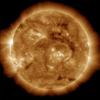
|
-
PIA17669:
-
Pulses from the Sun
Full Resolution:
TIFF
(3.147 MB)
JPEG
(71.34 kB)
|

|
2012-08-31 |
Sol (our sun)
|
SDO
|
Atmosphere Imaging Assembly
|
691x720x3 |

|
-
PIA18167:
-
Magnificent Outburst

Full Resolution:
TIFF
(1.493 MB)
JPEG
(66.48 kB)
|

|
2016-06-16 |
Sol (our sun)
|
SDO
|
Atmosphere Imaging Assembly
|
2100x2100x3 |
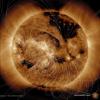
|
-
PIA20881:
-
Magnetic Field Illuminated
Full Resolution:
TIFF
(12.58 MB)
JPEG
(804.6 kB)
|

|
2015-07-10 |
Sol (our sun)
|
SDO
|
Atmosphere Imaging Assembly
|
1024x1024x3 |
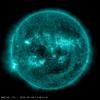
|
-
PIA19680:
-
Solar Activity Seen at Sunspot Site Tracked by Mars Rover
Full Resolution:
TIFF
(3.147 MB)
JPEG
(117.4 kB)
|

|
2015-08-26 |
Sol (our sun)
|
SDO
|
Atmosphere Imaging Assembly
|
792x792x3 |
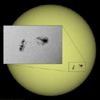
|
-
PIA19876:
-
Big Sunspot Group

Full Resolution:
TIFF
(1.028 MB)
JPEG
(58.74 kB)
|

|
2015-08-19 |
Sol (our sun)
|
SDO
|
Atmosphere Imaging Assembly
|
720x720x3 |
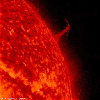
|
-
PIA19875:
-
Eiffel Tower Plume

Full Resolution:
TIFF
(1.194 MB)
JPEG
(53.77 kB)
|

|
2015-08-06 |
Sol (our sun)
|
SDO
|
Atmosphere Imaging Assembly
|
720x720x3 |
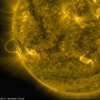
|
-
PIA19874:
-
A Golden Arch

Full Resolution:
TIFF
(1.374 MB)
JPEG
(54.66 kB)
|

|
2015-06-30 |
Sol (our sun)
|
SDO
|
Atmosphere Imaging Assembly
|
720x720x3 |
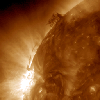
|
-
PIA18210:
-
Plasma Push and Pull

Full Resolution:
TIFF
(1.272 MB)
JPEG
(34.16 kB)
|

|
2015-04-03 |
Sol (our sun)
|
SDO
|
Atmosphere Imaging Assembly
|
792x819x3 |

|
-
PIA17915:
-
Two Coronal Holes

Full Resolution:
TIFF
(1.46 MB)
JPEG
(52.39 kB)
|

|
2015-01-29 |
Sol (our sun)
|
SDO
|
Atmosphere Imaging Assembly
|
792x792x3 |
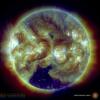
|
-
PIA17914:
-
Substantial Coronal Hole
Full Resolution:
TIFF
(1.883 MB)
JPEG
(66.47 kB)
|

|
2015-09-02 |
Sol (our sun)
|
SDO
|
Atmosphere Imaging Assembly
|
720x720x3 |
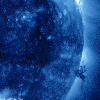
|
-
PIA19878:
-
Tangled up in Blue

Full Resolution:
TIFF
(1.556 MB)
JPEG
(84.17 kB)
|

|
2015-09-13 |
Sol (our sun)
|
SDO
|
Atmosphere Imaging Assembly
|
4096x4096x3 |
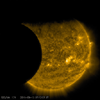
|
-
PIA19949:
-
SDO Transit, September 2015

Full Resolution:
TIFF
(19.58 MB)
JPEG
(918.5 kB)
|

|
2015-09-10 |
Sol (our sun)
|
SDO
|
Atmosphere Imaging Assembly
|
720x720x3 |
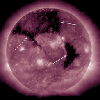
|
-
PIA19950:
-
A Triumvirate: Three Coronal Holes

Full Resolution:
TIFF
(1.195 MB)
JPEG
(44.65 kB)
|

|
2015-10-13 |
Sol (our sun)
|
SDO
|
Atmosphere Imaging Assembly
|
720x720x3 |
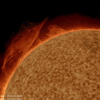
|
-
PIA20008:
-
Hefty Prominence Eruption

Full Resolution:
TIFF
(1.164 MB)
JPEG
(53.28 kB)
|

|
2015-10-28 |
Sol (our sun)
|
SDO
|
Atmosphere Imaging Assembly
|
720x720x3 |
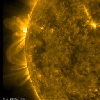
|
-
PIA20048:
-
Active Regions Blossoming

Full Resolution:
TIFF
(1.494 MB)
JPEG
(61.29 kB)
|